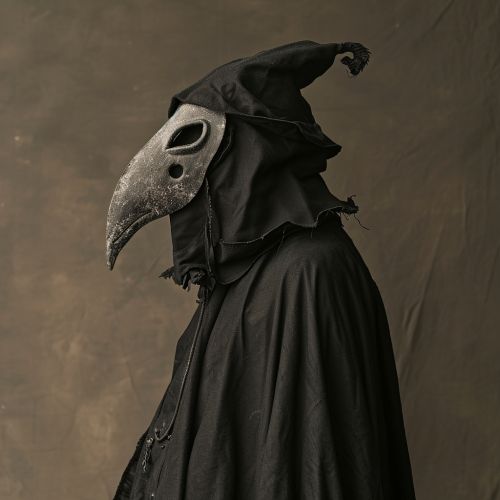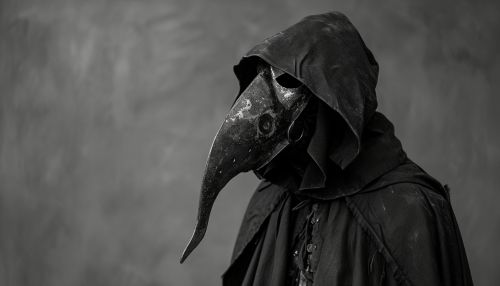Plague doctor
Origins and History
The plague doctor was a common figure in Europe, particularly from the 17th to the 19th centuries, during times of bubonic plague outbreaks. These medical practitioners were specifically hired by towns and cities in hopes of treating plague patients, irrespective of their wealth status.


The first recorded instance of a plague doctor was in the 14th century during the Black Death in Europe. However, the iconic costume associated with plague doctors, comprising a beaked mask, waxed overcoat, and a cane, was not introduced until the 17th century. This was primarily due to the miasmatic theory of disease transmission, which postulated that diseases were spread through 'bad air' or miasma.
Costume and Equipment
The plague doctor's costume was designed to protect the wearer from the supposed 'bad air'. The beaked mask was filled with aromatic items and spices, thought to purify the air breathed by the doctor. The overcoat was waxed to prevent bodily fluids from sticking to it, and the cane was used to examine patients without direct contact.
Role and Responsibilities
Plague doctors were responsible for treating plague patients and were often required to perform autopsies to better understand the disease. They also kept records of casualties, issued death certificates, and were sometimes tasked with witnessing wills of the dying. Despite their crucial role, plague doctors were often ostracized due to the fear associated with their job.
Impact and Legacy
The image of the plague doctor has become an iconic symbol of the Black Death and subsequent plague outbreaks. While their methods were based on flawed understanding of disease transmission, their work contributed to the development of epidemiology and public health policies.
